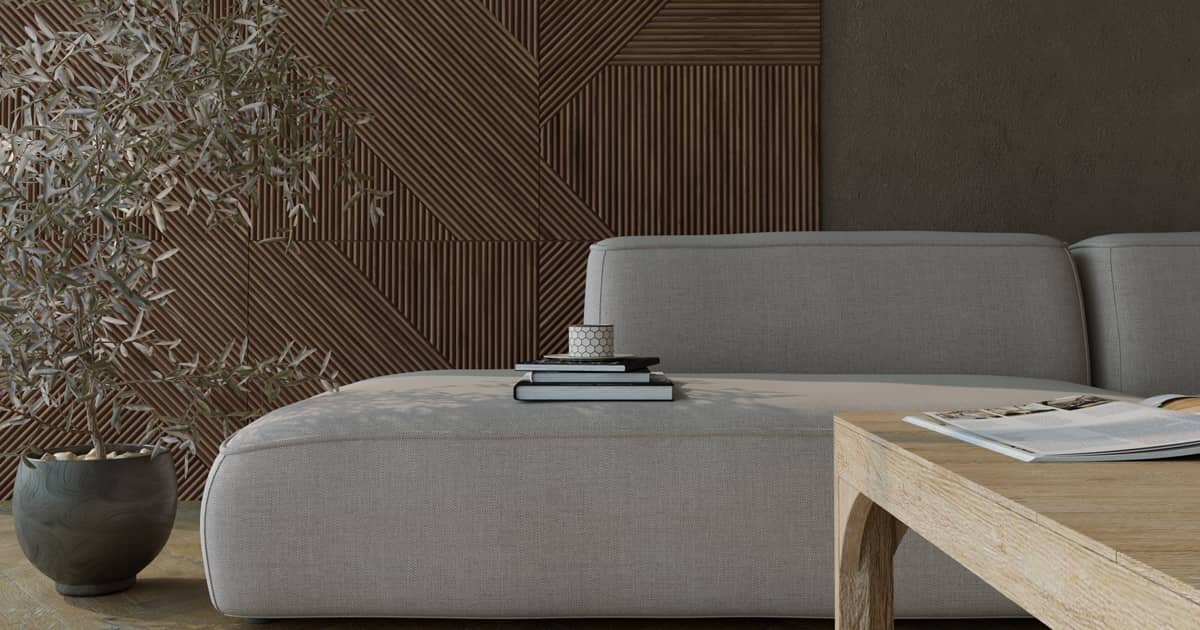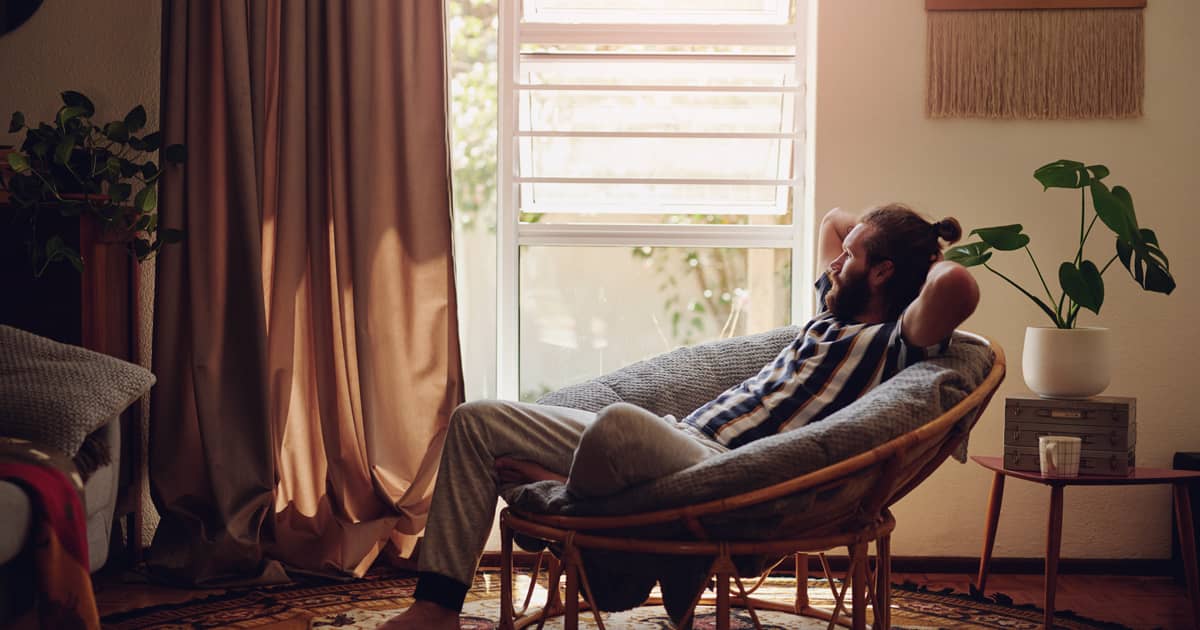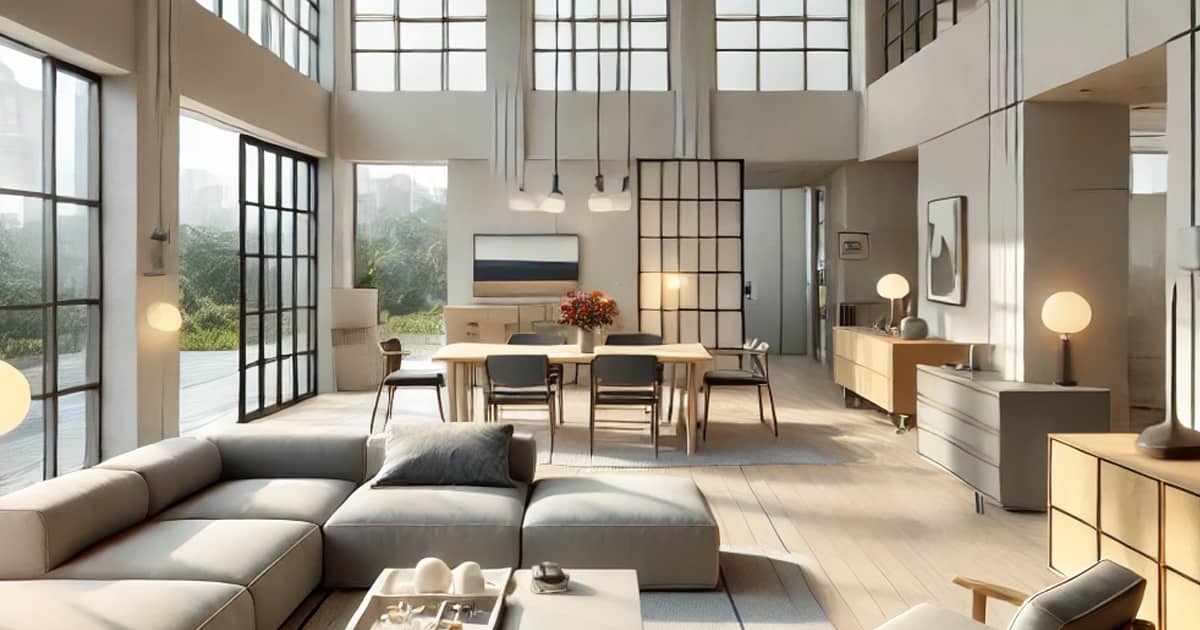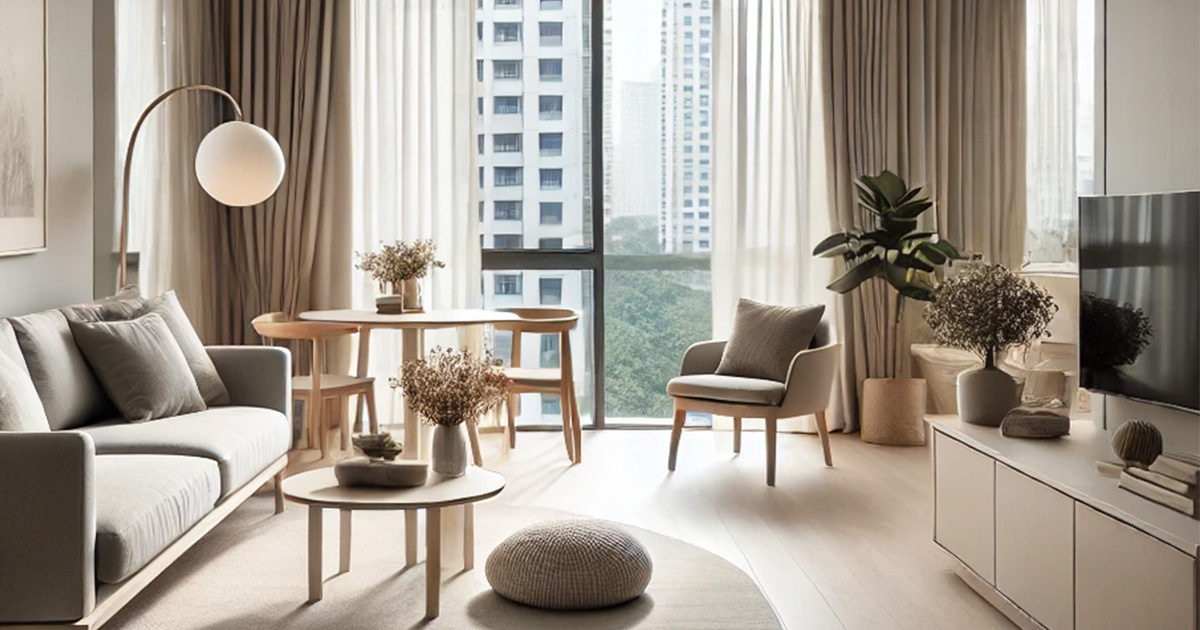Discovering Wabi-Sabi
Wabi-Sabi, a Japanese philosophy that celebrates imperfection, impermanence, and simplicity, is making waves in the interior design world. Rooted in Zen Buddhism, it encourages an appreciation for the beauty of natural aging and the charm of the incomplete. In Singapore, where space is often limited, Wabi-Sabi offers a refreshing approach to creating serene and harmonious living environments.
The Essence of Wabi-Sabi
At its core, Wabi-Sabi values natural materials, asymmetry, and a muted colour palette. It’s about embracing the imperfections in life and finding beauty in the flawed and the worn. This philosophy aligns perfectly with the minimalist lifestyle many Singaporeans are adopting, focusing on quality over quantity and creating spaces that exude calm and tranquility.
Integrating Wabi-Sabi into Different Spaces
Living Room
In the living room, natural materials such as wood, stone, and clay bring warmth and character. Handcrafted furniture with rustic textures adds depth, while aged items like a weathered coffee table or vintage rug contribute a sense of history.
Kitchen
The kitchen marries functionality with simplicity. Handcrafted ceramics and utensils turn everyday items into decorative elements. Open shelving made of reclaimed wood showcases these items, keeping the design straightforward and practical.
Bedroom
A serene, clutter-free bedroom is essential. Natural linens, organic cotton bedding, and simple wooden furniture foster a restful environment. A muted palette of greys, beiges, and whites enhances the calm, while handcrafted elements add texture and interest.
Bathroom
Bathrooms benefit from organic shapes and materials. Stone sinks, wooden accents, and bamboo accessories create a calming atmosphere. Natural light, soft colours, and minimalistic design further enhance the space’s serenity.
Choosing Wabi-Sabi Materials and Colours
Materials that age gracefully are key to the Wabi-Sabi aesthetic. Wood, stone, clay, and linen are excellent choices, bringing warmth and a tactile quality to your home. The colour palette is inspired by nature, featuring earthy tones, muted hues, and natural finishes to create a harmonious backdrop.
Furniture and Décor for a Wabi-Sabi Home
Select furniture that showcases craftsmanship and natural beauty. Handcrafted wooden tables, ceramic bowls, and woven chairs become focal points. Incorporate ceramics, woven textiles, and aged objects to add character and continuity to your home.
Embracing Scandinavian, Muji, and Feng Shui Influences
Scandinavian Design
Scandinavian design focuses on simplicity, functionality, and beauty. Known for its clean lines, neutral colours, and emphasis on natural light, it complements Wabi-Sabi by prioritising comfort and practicality. Use light wood furniture, minimalist décor, and plenty of natural light to create an inviting and functional space.
Muji-Inspired Design
Muji design, rooted in Japanese minimalism, emphasises simplicity and functionality. It aligns with both Wabi-Sabi and Scandinavian principles by valuing practicality and aesthetics. Opt for multi-functional furniture, neutral tones, and clutter-free spaces to achieve a Muji-inspired look.
Feng Shui Principles
Feng Shui, the Chinese art of harmonising with the environment, adds another layer of tranquillity to your home. It focuses on the flow of energy (chi) and the arrangement of furniture and décor. Integrate Feng Shui by ensuring good air flow, using natural elements like water and plants, and positioning furniture to encourage positive energy.
The KonMari Method
Marie Kondo’s KonMari Method complements Wabi-Sabi and minimalist design philosophies by encouraging decluttering and organisation. Keep only items that “spark joy” and find a designated place for everything. This method not only enhances the aesthetic of your home but also promotes a sense of peace and order.
Maintaining a Wabi-Sabi Home
Embrace the patina of time and natural wear. Let your home show signs of natural aging, with scratches on wooden floors and tarnished metal adding to the beauty. Encourage a minimalist lifestyle to complement the Wabi-Sabi aesthetic, focusing on quality over quantity.
Local Resources and Inspiration
Singapore offers a wealth of resources for those looking to incorporate Wabi-Sabi and related design philosophies. Visit Naiise and Journey East for unique items. Engage with online communities like Singapore Home Decor and Interior Design Singapore to exchange ideas. Workshops and courses offer hands-on experience and expert advice.
Living the Wabi-Sabi Way
Wabi-Sabi is more than just an aesthetic; it’s a way of life. Embrace the beauty of imperfection and the impermanence of all things to create a home that is both beautiful and meaningful. This philosophy encourages mindfulness and appreciation for the present moment, making your living space a true sanctuary.





